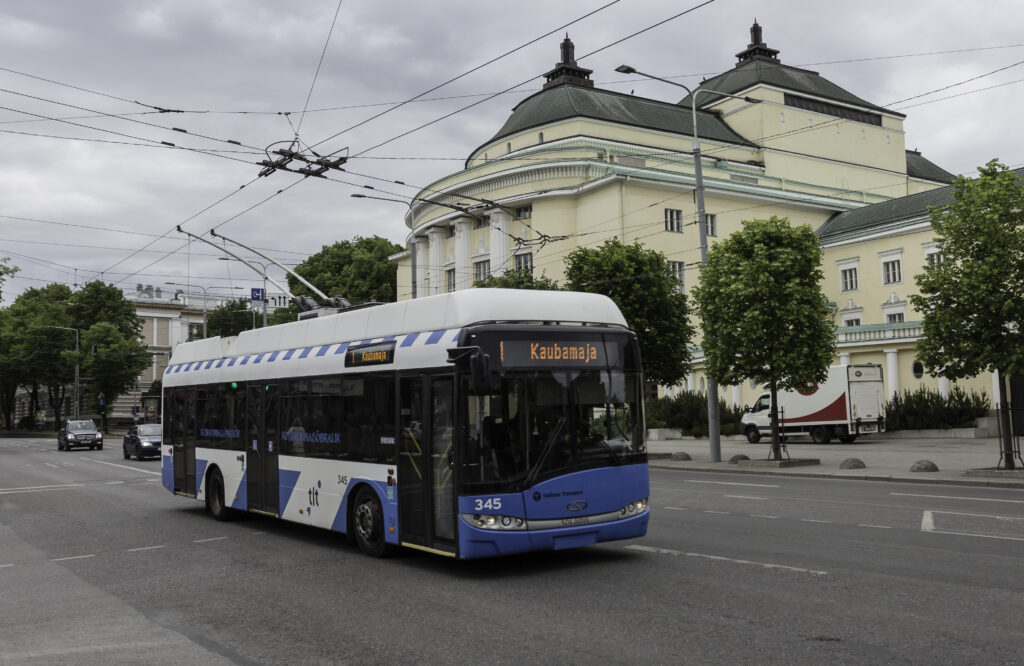Tallinn trolleybus network 55

On 6 July, we celebrate the 55th anniversary of the trolleybus network in Tallinn.
The planning for a trolleybus system in Tallinn began already by the 1940s. The first route was supposed to be Balti jaam – Pirita – Merivälja. However, this plan was never realised. More serious preparations to launch the trolleybus network began in the second half of the 1950s. In 1957, the registered immovable Paldiski maantee 48a was allocated for the construction of a trolleybus depot. As the construction work dragged on, the depot was temporarily located at the Ädala 7 warehouses. They finally moved to Paldiski maantee in 1970 and the administrative building was completed in 1973.
By 1977, the route Estonia – Hipodroom had developed into route 1 Mustamäe – Kaubamaja. In the same year, the development of route 3, which had already started in 1969, was also completed. The first trolleybuses reached Balti jaam in 1970 when route 4 was opened. In 1971, route 5 Mustamäe – Balti jaam was added to the route Keskuse – Balti jaam. Trolleybuses 6 and 7 started operating in Väike-Õismäe in 1980. In 1987, route 9 Mustamäe – Kopli was opened.
The end station at Akadeemia tee in Mustamäe was completed in 1967, extensions were added to it at the end of the 1970s. The end station in Väike-Õismäe was opened in 1980, prior to that a mobile home and a rental apartment in a nearby house were used. The end station building was completed in 1987. Keskuse end station was also completed that year.
Trolleybuses became an important mode of public transport for the residents of Mustamäe, Väike-Õismäe, Kristiine, Põhja-Tallinn and Kesklinn. Even though only four trolleybus routes remain today and some of the trolleys have been replaced by hybrids, they still hold an important position in the capital city’s public transport. However, if we are talking about electric transport more broadly, then the future definitely belongs to electric buses, not trolleybuses. By 2035, only electric buses will serve passengers on the streets of Tallinn because electric transport is sustainable and human-friendly.

